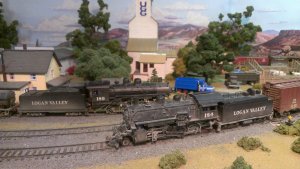Actually, I'm surprised that the Bachmann 2-8-0 didn't make it around the 15"r curve. OK, I know that the ideal layout utilizes the widest possible curve for the space available. My layout's minimum radius is 24", and that is superelevated, the tightest section is an industrial lead off a #6 curved switch that comes out to 20". Prototype railroads served many industries, especially in industrialized urban areas, where curvature was extreme. Some crews utilized tractors fitted with couplers to switch these industries such as in Baltimore and Jersey City, while other locations uses specifically designed locomotives such as PRR's class A4 0-4-0 to switch tight curved locations. Other power was specifically prohibited from usage in serving these locations.
The other side is that in some cases, it was amazing what would fit around tight prototype curves. I recall seeing a video, of a B&O local freight, powered by a 2-8-2, normally considered a road fright loco. It served this rural industry on a really sharp curve, I felt sure that it would spread the rails, but the secret was that the inside driving wheels were blind - that is flangeless. In a more modern setting, back in the '90s we started using SD40-2s and SD50s on local assignments on Conrail, that serviced industries which were restricted to SW type power during the PRR/PC era. It became amazing to see some of the places a 6 axle fit into, and even more amazing that it remained on the rail.
Joe


